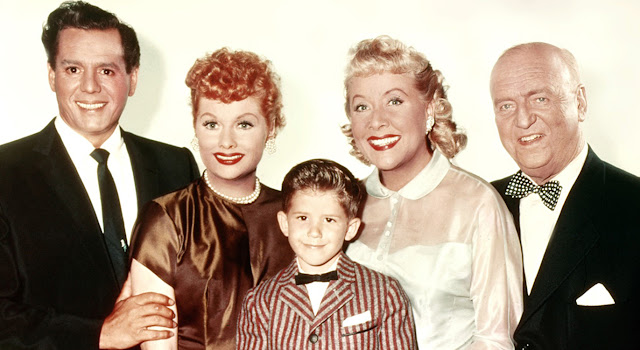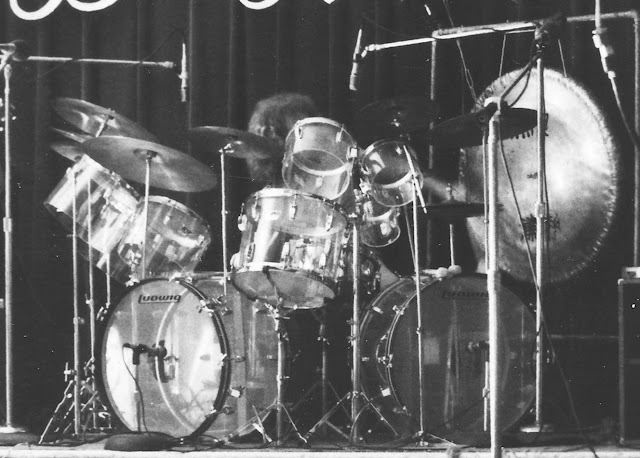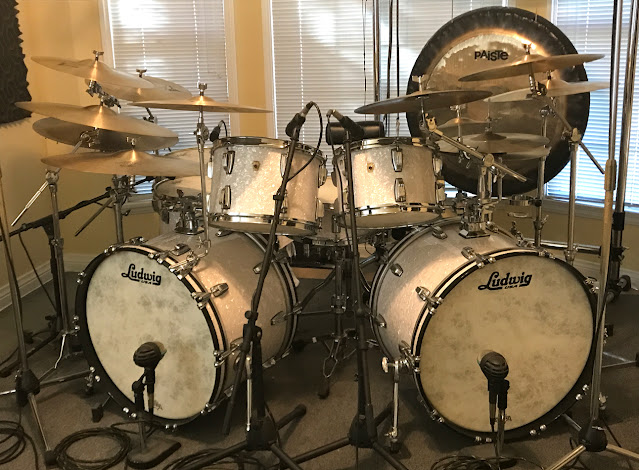My Drumsets, Part 1: E.W.Kent and WFL Zephyr (1965 – 1968)
In spite of having been so rapturously in love with drums since the age of eight, compared with many drummers who have reached my (much more advanced) current age I've actually owned relatively little drum equipment throughout my life. This post is Part 1 in a multi-part rundown of it all.
First drumset (1965):
E.W.Kent (black-diamond pearl wrap)
Configuration: Bass
drum, tom-tom, snare drum
• 20” x 14” bass
drum, 12” x 8” small tom, 14” x 5½” snare drum
• Various
entry-level hardware
• 15” Paiste
Standard crash cymbal, 13” Italian (no brand name) crash cymbal, 14” Zyn hi-hat
cymbals
After taking lessons for a year and practicing a couple of
hours every day on my Pearl MIJ snare drum and humidor-lid cymbal (see Starting To Play), when I
was 13 I used my bar-mitzvah gift money ($150!) to purchase my first drumset
used from my friend Terry, who had switched from playing drums to playing
vibes. It included entry-level (read: cheap) hardware and an old fibre trap
case that doubled as a drum stool for Terry. I guess Terry wasn’t as concerned
with his drumming comfort as I was, because almost immediately I got myself an
entry-level (read: cheap) drum stool that had some padding for my bony 13-year
old butt. (The catalog listing for the kit I bought from Terry appears at the top of this article. Terry's kit also included hi-hat cymbals on a hi-hat stand and an extra crash cymbal and stand.)
Although E.W.Kent were American-made drums and were an
improvement over the MIJ imports of the day, they featured very thin 2-ply maple shells and were designed for the
beginning player, so they weren’t that
much of an improvement. In particular, the E.W.Kent snare drum's sound had lots of ringing
in it that stubbornly remained even though I tried new drumheads and different
tunings, and it had a snare mechanism that was flimsy and frequently slipped
out of adjustment. The couple of times I substituted my Pearl snare drum for it
I thought the Pearl sounded better (less out-of-control ringing), but my drumming
ego would not countenance my using a red sparkle snare drum with my new
black-diamond pearl drumset. (Although at times I would tune the Pearl as low
as it would go and try to use it as a floor tom, since the Kent drumset lacked
a floor tom when I bought it.)
The cymbals were also not quite professional-quality
instruments. The Zyn hi-hat cymbals sounded particularly nasty, spitting out
clangy gong-like overtones whenever I tried to play them without holding them
together with the foot pedal. The Paiste Standard and Italian crash cymbals
weren’t too bad though, and I kept on using them even as I began adding
top-of-the-line Zildjian cymbals to my setup a little later on. In fact, I used
them all the way until I got brand-new drums in 1973.
But none of that mattered to me at first — I had a REAL-LIVE
DRUMSET sitting an arms-length away from my bed, beckoning me with
temptation 24/7/365. I continued with my weekly drum lessons and began a
three-hour daily practice regimen (one hour on snare drum, plus two more on the
entire drumset), which I kept up for the next six years until I moved into a house with
my bandmates while in college.
Second drumset (1966): WFL (Ludwig)
Zephyr (black & gold duco painted finish)
Configuration: Bass drum, floor tom, snare drum
• 26” x 14” bass drum, 16” x 16” floor tom, 14” x 7” snare drum
• Various 1940s-era entry-level hardware and a Ludwig Universal
Speedmaster pedal
• 1 nickel/silver 10” cymbal
Ever since I could remember, Pop
would go to U.S. government surplus auctions, looking for things that he or his
buddies could quickly fix and flip for a profit. (Pop was a certified
piston-engine aircraft mechanic and knew his way inside, outside, around and
through all manner of 1940s – 1950s era mechanical and electronic devices.) For
years and years we would routinely get auction catalogs in the mail describing the
items to be sold. I remember once when I was around nine-years old seeing
a surplus M4 Sherman tank in one of these catalogs and begging Pop to get it
for me. After all, it would have only cost $100/ton! In his soothing Brooklyn accent he gently explained to me (“Whadda ya, NUTS?”) that since an M4
weighed 35 tons, $100/ton still worked out to be $3500, and that the tank would not have been in running order, and that it would have had its 75mm cannon
removed before it would have been sold. I was crushed.
But the government auction I
remember the most is the one in 1966 that Pop returned from with a 1939 – 1940
vintage WFL (Ludwig) Zephyr drumset in tow, and it included a big prize — a 16”
x 16” floor tom. Pop knew how much I needed (OK, wanted) a floor tom to complete my Kent set and my guess is that he
had been able to pick up this nearly 30-year old drumset for a song. Of course
the Zephyrs didn’t match my black-diamond pearl E.W.Kents — they were all in a
black & gold duco (painted) finish. But the important thing was that the E.W.Kents finally became a standard-configuration 4-piece drumset; matching
finishes didn’t matter, at least not for a little while.
very similar to the one Pop brought home in 1966. The drumset Pop
bought had a full-sized floor tom (with legs) instead of the smaller
The other good thing about the
Zephyr set was that it was fitted with calfskin drumheads. Since natural calf
heads are hygroscopic they react to changes in temperature and humidity. This
requires that the drummer must frequently tweak their drums’ tuning, sometimes
even completely re-tuning their entire drumset. The E.W.Kents were fitted with plastic
heads (like just about all drums have been since the invention of the plastic
drumhead in 1957), which maintain their tuning regardless of the weather, but
since my new floor tom had calf heads I had to learn the ins and outs of drum
tuning so I could keep the floor tom’s pitch where I wanted it to be relative to the other drums. That
tuning experience has served me well ever since then, enabling me to quickly
get and maintain the sound I want out of any drumset with relatively little
bother.
I set up the Zephyr’s snare
drum, bass drum and cymbal facing the only remaining open wall in my
now-crowded bedroom, attached the original pedal from the E.W.Kent set and
occasionally brought my drum stool over and played the set. I remember that its
snare drum was really nice sounding; it would be another four years before I
got one that sounded that good to use with the “Expand-O-Kent” set (see below).
“Expand-O-Kent” drumset (1967 – 1973): Combination of E.W.Kent and Ludwig drums
Added in early 1967:
• E.W.Kent 16” x 16” floor tom (black-diamond pearl wrap)
• 18" A Zildjian Crash-Ride cymbal; 8" A Zildjian Splash cymbal
• Walberg & Auge Buck Rogers snare stand and Perfection hi-hat stand
New drumset configuration: Bass drum, tom-tom, floor tom, snare drum
In 1967 I began expanding my E.W.Kent drumset by adding a brand-new matching black-diamond-pearl Kent floor tom. (I moved the Zephyr floor tom across the room to be with its Zephyr snare and bass drum brothers.) The E.W.Kent floor tom was a good drum that was easy to tune and had solid tone.
Around this time I finally got my first Zildjian cymbals, an 18” crash/ride that I bought at a pawn shop and an 8” splash that I bought brand-new (it cost $10.00). I also purchased a top-of-the-line Buck Rogers snare drum stand (the snare stands included with the E.W.Kent and Zephyr kits were not much sturdier than typical music stands) and a professional-level Perfection hi-hat stand (the same model I saw both Gene Krupa and Buddy Rich using on the cover photo of their 1956 Krupa and Rich LP.)
Now that all my drums matched and I had a full 4-piece "Krupa Standard" configuration (see A Few Words About The Drumset), I was finally ready to take my drums out and play them in public. I soon formed my first real band (Thursday Island — not a bad name!) with my friends Mark Voland on bass and vocals, Dan Rosen on guitar, and Scott Wroot on guitar and vocals. We played covers of early Who songs ("I Can See For Miles" and "My Generation"), The Seeds ("Pushin' Too Hard") and others that have been erased from my memory by the following 50+ years. Our one original composition was called "The Big Tomato" (of course that was the one that featured my drum solo).








Comments
Post a Comment